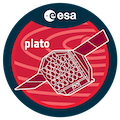Speaker
Description
Sub-Neptunes, i.e. planets with a radius in the 1-4 Earth radius range, are estimated to exist in close-in orbits around 30 to 50% of all Sun-like stars. A leading model for the formation of this population is the "breaking the chain" model. In this model, close-in systems of sub-Neptunes form in resonant chains due to the migration of planets in the protoplanetary discs. After the disc dissipates, most resonant chains become dynamically unstable. The chains that survived then evolved by tides over Gyrs timescales. Resonant configurations, although representing only a few per cent of the transiting systems, could therefore be key to understanding the process of formation and evolution of about half of planetary systems. For such systems, the long observation baseline of transit surveys such as Kepler and PLATO enables the characterisation of their architecture, including the planetary masses, by observing the effect of the planet-planet gravitational perturbation by the transit timing variation (TTV) method. For transit surveys, this additional observable comes 'for free'. However, TTVs can be challenging: for shallow transits, the use of non-adapted methods can lead to non-detection of planets or erroneous TTV measurements, which in turn bias the estimated masses. For some configurations, the mass can be affected by mass/eccentricity degeneracy. Finally, non-transiting planets can also affect the observed TTVs. I will first discuss these challenges and the state-of-the-art ways to alleviate them. I will then describe how they potentially impact major statistical results of the 2010s, notably the apparent paucity of exoplanetary systems inside MMRs, and the apparent low density of TTV-characterised planets. I will then discuss how PLATO can tackle these issues, and evocate new science cases that will be enabled by the brightness of PLATO's targets and its ability to estimate the age of the systems.

